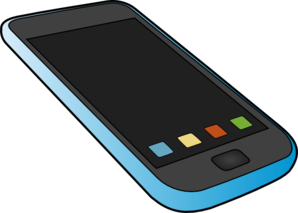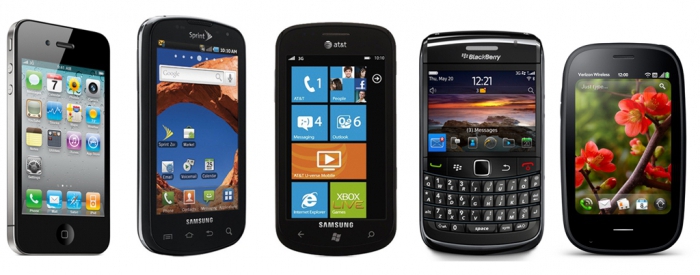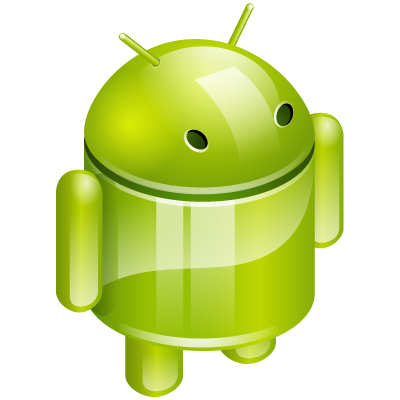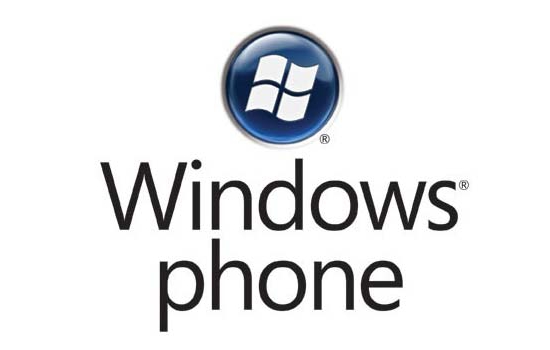Smartphones are the type of technology that has gained incredible popularity in Russia, as in the world. How are these devices different from other devices? How to choose a smartphone with optimal performance?
Smartphone: what is it?
It is believed that the first device in the world that could be classified as a “smartphone” appeared at a time when not all the inhabitants of the planet knew about cell phones. In 1994, IBM surprised the US and global electronics markets with the launch of its Simon device. BellSouth, a telecommunications company, helped develop the “blue giant” device.
"Simon" was equipped with an advanced LCD display with touch technology for its time. There was also a set of programs on the phone, which endowed the device with a large set of functions (apart from making voice calls): keeping a notebook, drawing, scheduling, and sending faxes. That is, almost everything that modern smartphones can do is devices that combine, apart from typically "telephone" functions, also the capabilities inherent in computer technology.

It turned out that “Simon” was even too “tricked out” for its time, and its sales were not even given in the USA. However, the very fact of the appearance of such a device had a huge impact on the market of mobile gadgets of a modern type, the formation of which began in the early 2000s.
Smartphone or tablet?
In parallel with smartphones, the so-called tablets entered the market. They evolved, in turn, from handheld computers and laptops. For several years, smartphones and tablets have become very close in their functions: the former, for example, began to be equipped with incredibly powerful (for a cell phone) processors, memory, a flash drive, and the latter - equipped with modules for supporting cellular communications and mobile Internet (which almost never laptops and PDAs were supplied, in turn).
Today, the line between smartphones and tablets is very arbitrary. To put it in an extremely simple language, devices of the first type are those that have a screen within 6-7 inches and are more adapted for phone calls. Tablets, in turn, remain mainly computers and have a display with a diagonal of 8-10 inches or more. Both types of devices are often called "gadgets" (English gadget).

How to choose a smartphone from among hundreds of models on the market? What to look for when buying? There are two lines of the most significant objective criteria. Firstly, this is the operating system, and secondly, the technical characteristics of the devices.
Regarding the first criterion, there are three of the world's most popular OS for smartphones: iOS, Android and Windows Phone.
IPhone, Android, and Windows Phone
When they say “smartphone”, very often they immediately use the word “android” or “iPhone”. What does it mean? The fact is that Android is the name of the world's most popular operating system for mobile gadgets. Under the control of this OS, smartphones are produced under dozens of brands (including recognized market leaders - Samsung, HTC, Sony, Philips, etc.).
In turn, "iPhone" (the original iPhone) is a smartphone manufactured by Apple, which, unlike other brands, has created its own operating system for mobile gadgets (called iOS).
Moreover, this OS is never installed on devices of other brands, the rights to use it are wholly owned by Apple.
Thus, in the smartphone market, there are two main “camps” - devices from various world manufacturers on which Android is running, and their ardent competitors in the face of Apple's “iPhones” running iOS.In most cases, when deciding how to choose a smartphone, the user is forced to decide between these two platforms.
In recent years, Microsoft has actively intervened in their struggle, creating its own operating system for smartphones - Windows Phone. It is quite possible, experts say, the appearance in the foreseeable future also of their own devices from Microsoft. Other companies that manufacture both smartphones and operating systems for them are also trying to withstand competition (according to many experts, Blackberry has the greatest chance of catching up with the leaders).
IPhone, Android, or Windows Phone?
Of course, “iPhones” and “Androids” find their fans who are ready to actively prove that their favorite platforms are the best. The most interesting, both of them are right in their own way, since there are plenty of arguments on both sides.
Despite the fact that the development of the Android OS has been carried out since 2003, Apple developers brought the first iPhone to the market earlier - in 2007. While the “pioneer” of the Android market came out only the next year, it was an HTC Dream device. The Windows Phone operating system and the first devices on it appeared in 2010, when the market for mobile gadgets was already growing exponentially.
For some users, the role of placing brands on the “podium” in the context of the history of market development plays a role. And therefore, many prefer to acquire devices from the company that took the "gold" - from Apple. Also, users do not even think about how to choose a smartphone of a different brand.
Other mobile electronics enthusiasts, in turn, do not like the monopoly dependence on one brand, and they prefer to try devices from different manufacturers. Thus choosing between Android and Windows Phone. What are the features of each of these two platforms? How to choose the right smartphone based on the advantages of Android and Windows Phone?
Android: Pros
The main advantage of Android is the openness of the platform (it is based on the free Linux operating system). This makes it possible to create applications and games for Android without restrictions for all developers who wish to do so. Android OS is completely free, so manufacturers of low-cost smartphones are actively using it (Windows is a paid system, the developer company will not let you install iOS).

That is, at the moment, the owner of the Android device is likely to have access to more games and applications than if he were using an iOS or Windows device. You can choose a smartphone on Android by studying offers from dozens of different brands. This means that the user has a higher chance of finding the right one for himself in terms of price and features.
Another nuance: in the market of mobile devices in general and in the retail segment in particular, there are much more Android specialists than iOS. Therefore, a person who has come to the communication salon is guaranteed to be prompted how to choose the right smartphone with the best price on Android, and all the related technical nuances of using such devices will be explained.
Windows Phone: features and capabilities
What are the features of Microsoft's mobile OS? First of all, this is the principle of file management. The main elements here are not the icons, as in iOS and Android, but the so-called "tiles". Their functions are very diverse. Using tiles, the user can launch applications, open web pages, play files, etc.

Other features of Windows Phone are hubs and rooms. They can concentrate certain types of data (for example, contacts from the phone book, photos, certain types of files, etc.). Often with the help of "hubs" and "rooms", the manufacturers of smartphones on which Windows Phone is installed carry out the structure of the device control system.
The majority of users, when deciding how to choose a good smartphone, have experience operating computers and laptops with the Windows operating system. And for many of them, a mobile device with the same OS is more familiar.Moreover, for the mobile version of Windows, as well as for its computer "original", Word, Excel, PowerPoint, familiar to many users from childhood, have the same capabilities as their "large" prototypes.
Price tag from the developer
Which smartphone is better to choose - Android, Apple or Windows Phone - if the question is about saving? On the one hand, there is a conditional trend in the mobile device market: “Android” devices are generally considered slightly cheaper than the rest, more expensive are those equipped with Windows Phone, and finally, the most elite ones are “iPhones”. On the other hand, within each of these platforms there are segments in which there are both very cheap smartphones and incredibly expensive. But on average, the situation at prices is just that. If the question is - which budget smartphone to choose, then most likely the user will need to look for an option in the Android segment. Slightly more "fashionable" gadgets - on more expensive platforms, Windows Phone and iOS.
Many people study, determining which smartphone to choose, user reviews relating to all three platforms. But very often faced with subjectivity. Therefore, we will choose a smartphone based not only on the OS. We will study the second criterion, which will allow us to decide how to choose a good smartphone - hardware specifications.
Choosing a smartphone: hardware factor
The following indicators are of greatest importance:
- the size of the display and the technology of its manufacture;
- processor frequency, number of cores;
- the amount of RAM;
- The size of the built-in flash memory and support for its external modules;
- support for wireless technology, satellite navigation;
- camera.
Of course, a lot of characteristics will be perceived by the user subjectively: color, design, device size, manufacturing material. The personal attitude to the brand plays a role: someone has a Samsung TV at home, and if it works without failures, then, probably, when choosing a smartphone, a person will remain faithful to this Korean brand.
However, a significant part of users focuses on choosing a smartphone according to parameters, and not on the basis of sympathy for the brand. Consider each of the above characteristics individually.
Display
Display size is a controversial factor. Many users prefer large screens. On them, they believe, the details of pictures and photographs will be better visible, higher quality video, more labels and icons will fit. This is all true. But there is another point of view, according to which the big screen is for a tablet, and a smartphone should subdue its customer with miniature.
Another thing is display manufacturing technology. There are standards that are considered obsolete - TN, TFT, there are more modern - LED, IRS. The second ones provide better picture quality, a larger viewing angle. At the same time, experts say, the first type of screens, although they produce worse images, are more economical in terms of energy consumption.
CPU
Here the criterion is clear: the higher the clock frequency, the better. It is measured most often in gigahertz (GHz). If the description of the smartphone says: 1.5 GHz - this is the processor. Less often - in megahertz (in this case, the frequency will be indicated as 1500 MHz). Another important parameter is the number of cores. Similarly, the more of them, the smartphone will work faster and more stable. For a modern smartphone, it is ideal if the processor is 1.5 GHz or higher.
RAM
Regarding RAM, or RAM, quantitative characterization also plays the most important role. The more memory, the better. It is indicated in gigabytes (GB), less often - in megabytes. It’s great if the smartphone costs 1 GB of RAM or more.
Flash memory
Flash memory, similar to RAM, is measured in GB. It is usually divided into two types - built-in (its modules are installed on a smartphone at the factory) and external. In modern smartphones, it is usually 4 GB of internal and higher. Most devices have a limit on the maximum amount of external memory modules. It is desirable that it be at least 32 GB.
Camera
Another important criterion that is important when a person prefers to choose a smartphone according to the parameters is the characteristics of the camera. The main one is permission. The higher it is, the higher the quality of the photo and video. Measured resolution in megapixels (megapixels).

For modern devices, the standard value is 7-8 megapixels. You can choose a smartphone with a good camera among Android devices, in the iPhone group, and, of course, by studying gadgets running on Windows Phone.
Wireless and GPS
The main types of wireless technologies that are most often used in a smartphone are Wi-Fi, Bluetooth, as well as cellular standards - 2G, 3G, 4G. Ideally, if the device supports all five types of technologies. What is especially important - in terms of standards from mobile operators. There should not be a question with what tariff to choose for a smartphone so that all its functions work. A SIM card should be bought based on the benefits, not the hardware compatibility with the devices. The only thing is better to choose the tariff that offers the possibility of using mobile Internet, since it is far from always, and not everywhere, that you can connect to a wireless network.
By the way, regarding Wi-Fi. The compatibility of the smartphone with the 801.11n standard is critical. If it is not supported, then the device may not "catch" some types of wireless networks. It is desirable that the Bluetooth module is in the 3rd version and higher.
Most modern smartphones are also equipped with GPS receivers. Their functionality is approximately the same, the most important thing is that the device has programs for convenient use of the navigator.
